My fingers itched. My index finger was becoming raw from handling strands of lights as I worked them into the dense plastic needles of the growing forest in front of me. The small glass bulbs were hot, not hot enough to burn in most cases but sometimes I would lean my weight on a hand as I reached over the village and the pressure of my fleshy palm on the blazing bulb would feel an awful lot like burning. In all likelihood my hands were covered in small inflammations from countless encounters with little yellow flashes of light.
Leaning back I felt the joints in my legs pop. Setting up the Christmas village was an intense act of focus for me. The first time it took me around a week. As I became more practiced in later years I got it down to a solid 9 hours. As an adult I could set the whole thing up in around 5 hours.
I don’t remember which year I set it up first. It must have been my first or maybe second year. I started visiting Fae when I was 11. She had asked my mother to come down because she wanted to hire a boy to help out in her large garden. She was thinking of my older brother but my mom knew better. She brought both of us down the street to her house and we walked around the yard and she talked about the help she needed. And so it became arranged that for $3 an hour I would be her weeder and help out with other odd jobs as needed. She must have been 77 that year although I can’t remember her changing much over the years.
She had a large yard. In those early years before her daughter Becky built her house next door it covered about 3 acres. Probably two of those were taken up by the horse pasture in the back but this still left more bushes and strips of flower beds than anyone could reasonably handle alone. Between her being retired, me being homeschooled, the frequent visits of her son and daughter and grandkids, and the occasional heroic efforts of the local congregation we did a pretty decent job. Enough to host weddings back there now and then. But mostly it just hosted Fae and me.
I would pull weeds and plant flowers, trim bushes and rake leaves. Usually 2 or 3 times a week, after school. After a few hours and thoroughly mud-stained knees from kneeling in the flower beds she would invite me up to the house and give me some watermelon and maybe some nuts. Sometimes with orange juice or 7 Up. I would sit on the back porch overlooking the garden and feel the wonder of stretching out my limbs again.
I could stare at that view forever. The yard, a domain I knew every inch of from the grasping memory of dirt-stained fingers searching for the roots of encroaching lawn, made up the foreground followed by the horse pasture which hosted various colors and numbers of horses over the years. On the far side of that a row of trees marked a hill where a canal was dug. This hill and trees perfectly shrouded the housing development at the bottom of the hill so the next visible thing was the golf course. This provided a large green landscape before blending into the traffic of the freeway, the city beyond, and a panoramic view of the Wasatch Mountains. I would stare at those mountains through high school as I planned which one to climb next and ponder the path one must take to reach each summit.
We would chat about things too. I think it worked because we were willing to listen to each other when few others would. She would talk about whatever had been on the news that day or how the city had grown so much since her father had built the house down the street. I would soak it all in and try to make sense of it all occasionally offering my 2 cent conclusions which she often accepted. I suppose old women and young boys often have a hard time finding a considerate ear.
After some time she decided that I needed to learn to play the piano. She had been a teacher for many years, both a school teacher and a piano teacher. I had learned a few basics from my mother and watched my older siblings traverse piano lessons so I was amiable to the idea. After some watermelon she would march me to her baby grand piano and we would run through hymns and Christmas songs for an hour or so until I would go home. I don’t know how many years that lasted. I have yet to become a fantastic pianist but she always loved to hear me play when I would go back in later years.
As fall put a soggy cold stop to our outdoor yard work she brought me inside the house to make up for the rainy days. We would clean cupboards one room at a time in her old three-story house. In reflection I don’t know how we made it last all winter but I would pull out the bucket of warm water and splash a capful of ammonia in it and scrub each shelf in each closet in each room. This of course required removing the strangest assortment of things she had collected over the years. She had taught home economics or interior design or something like that at the Herriman High School. She had all kinds of left over decorations. Flower mounting gear, candles, needlework, ceramics, dried flowers or seed pods from the garden, preserved fruit, and enough holiday decorations that we had to rotate which ones we used each year.
This is where the village came in. Years ago, beyond my memory. Someone had given her a ceramic church that had a light bulb in it. Soon other small snowy buildings joined it and someone decided they should all be displayed together. A Christmas village was soon constructed with cotton batting as snow, little brick-styled rubber paths, and small glass people—the hand-painted kind you find in boutiques. This of course required some wire pine trees to add greenery and lights to bring a sparkle to the season. It was quite the undertaking. We would often spend the first day just sorting through the closets to find all the right boxes and trying to figure out how many holes the cotton should have in it. The village covered one end of her living room, an area about 100 square feet.
In the evenings Fae would sit in her living room (which didn’t have ceiling lights) and look at the glowing village and think up stories about the lives of the people in the small town. Like the two girls carrying geese home from the market for their Christmas dinner. Or the girl by the lamppost reading a book who kept hoping the certain young man would stop and talk to her. Or the Santa Claus dressed man trudging through the snow with a heavy sack trying the reach the skaters zipping around the lake. I don’t know if she actually dreamed of the stories or if she told them to me so that I would learn how to set everything in the proper place.
“Attention to detail” was the key to the village. The woman carrying the packages had obviously already done her shopping and therefore must be on her way home as opposed to the man with the briefcase who must be just starting his shopping. The deer would sneak down to the pond in the woods to watch the skaters there but never to the pond in the town where far too many people were about. I would point out the oddities of a village with only four houses also having four churches or that the houses on one end of town were three times larger than those on the other…but what can you do when a village is built by years and years of grandchildren presents and doorstep donations?
I had added my own pieces now and then (Fae had a birthday in November right before we started work on the village). There was a moose that made it in for a year or two but then was deemed too fragile for use (it’s also possible she forgot it was part of the village). A couple of deer with a “No Hunting” sign echoed my growing environmental sensitivities. I often would wrap her presents and hide them under her tree or on the doorstep so I could sneak away before she saw me. I hated to be there when she opened them for some reason, even though she almost universally appreciated them (a box of mints one year was passed on to others more interested in sweet things.)
She always insisted that “Good taste has no price tag” as she had taught her students all those years. This encouraged me to devote creative energies into her presents instead of financial means (I never asked for a raise so consequently I continued to make $3 an hour right up until I left for college at 18.) She has a wooden clock I fashioned in my scroll saw phase, a wooden painted eagle, and a plaster cast of her dog Penny’s footprint.
I used to take Penny, a beautiful Shar-Pei, for walks when I got big enough to keep up with her and Fae slowed down enough not to. We would explore the yard and head into the pasture where I explored the canal with its dense growth of trees and bushes, one of the wildest places in my day-to-day life. I found all kinds of small trails beaten into the side of the hill which I just knew had to be the foxes they sometimes saw in the field. Sometimes I would drop the leash and let Penny run around without me, taking care to keep her in the pasture where I could catch her again.
Once I didn’t manage to catch her again and trudged back to the house in defeat. We sat on the porch and watched her dash about the pasture chasing whatever it was that made those tracks. After about an hour I determined to try again and walked out there. This time she came straight to me and whimpered. A few whiffs made it clear she had successfully caught up to the beautiful skunk we once found in the grass back there. The next day it was obvious something more wrong than skunk spray had happened. Penny wasn’t drinking anymore and lay on her pillow moaning. An x-ray revealed cancerous growths spread throughout her body. With Becky leading the way we took Penny to the vet for the last time and I held her head as the vet gave her one last shot. We buried her on the south side of the house where the large green bush had been removed to make room for a vegetable garden, it being one of the sunnier spots in the yard. I cannot forget Fae’s teary voice asking me to dedicate the grave and my 16 year-old confusion about what I could do with what priesthood I had and whether it could be used for a dog, no matter how beloved.
I stepped back from it all when I went away to college. I would still wander down to visit when I was home now and then although it became harder to ride my blue razor scooter down the street as I grew too tall to reach the handles. I missed two years while I was living in California and shortly afterwards my parents moved away from our old house at the top of Appomattox Way. Even so I would find myself, the day after Thanksgiving starting to think about Christmas lights and snowy fake pine trees in a small glass town. Invariably I would take off a day to return to her house and dig out all the Christmas stuff from the basement and set up that village. After all, it hardly felt like Christmas without it.
As I grew older I began to doubt that the cotton was white enough anymore or that we had enough lights left working to make it worth it. But somehow it all came together. She would hover above and remind me where each house went, telling the stories of each person, although perhaps more to remind herself than to remind me. It did become harder for her to stand so I stationed her on the couch where she was tasked to open and unwrap the adornments from their packaging. By the time it was all set up the small plastic deer and gently glowing lights made me see past the aging cotton and gradually slowing matron to a Christmas day in a small snowy town, trapped forever in time.
Sometime after Christmas day, and usually after New Year, I would return to pack it all up again. Somehow it always came apart faster than it would go up. I would line up all the glass figurines on the couch and she would wrap up each one while I rolled up the lights once again, in reverse order from how I set them up. Before we started we would turn on the village one last time and gaze at it. She would say “I suppose we should take it down shouldn’t we” as if asking me to convince her. So I would answer with the appropriate arguments about how it made Christmas special and if we never took it down it would get dirty and so forth. She would agree and we would gaze a moment more and think about the holidays gone.
It was the first step to looking forward to spring. That was what she was mostly about anyway. Fae grows things. Her house was always a collection of plants that she decided shouldn’t die in the snow that year. Again and again she told me about how growing things heals the weary soul. She would give me articles now and then from her various magazines about all kinds of medical and psychological benefits to spending time in a garden. I would wash the dirt from my fingers and wonder what the arthritis would feel like from all the hours of weeding I did.
Yet I loved it. I sprouted a sunflower seed every day for a month to take up to scout camp for the summer when I taught the nature merit badge so I could show everyone what a growing plant looked like. Within 20 minutes of arriving the voracious chipmunks had eaten every single seedling. In college I spend two months trying to get a tulip to bloom indoors in time for Valentine’s Day the same way she seemed to convince bulbs to flower in mid-December. Whenever I gave a girl flowers I couldn’t bring myself to pick them so I gave her a whole pot with the flowers firmly rooted. I sprouted a pineapple plant from a store-bought fruit and for six years of schooling carried it around each time I moved. Fae worked hard to grow plants and she did it well.
All those years teaching school she grew students. She raised her children, and many of her grandchildren. She helped teach the young people at church and gave us frequent opportunities to visit and serve her. For some reason, after all she had done and all the years she had lived she decided to grow one more boy. She could have used him as just another hand to help in the garden. She could have paid him and sent him home each afternoon and he would have been fine. But instead she became one of his best friends. A compassionate mentor in challenging times and an encouraging voice to do better when things got too easy.
She is 93 now. I swung by this year after Thanksgiving ready to once more feel the itchy plastic of fake Christmas trees. Her tenants downstairs let me in and warned me that she couldn’t hear much anymore. I found her staring out the window and surprised as always by my visit. But this time she didn’t remember my name and couldn’t figure out why I had come. She couldn’t hear me well enough for me to explain. Soon Becky came from next door and explained how her mind had slipped in the last year, finally allowing age to claim its own. We agreed that a little Christmas village may cause more harm than good by changing her normal surroundings.
This year the glass houses stayed in their boxes, the dust filtered deeper into the cotton. The timeless village isn’t forgotten, its inhabitants frozen forever as always. They remain a perpetual snapshot of the spirit of a season and a special women, put once more away in storage with the promise of the coming spring. When flowers will reawaken and the horses will graze across the pasture. And one particular small boy with mud-stained jeans will follow an old woman around her garden.

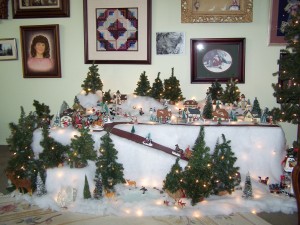
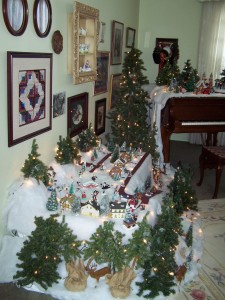
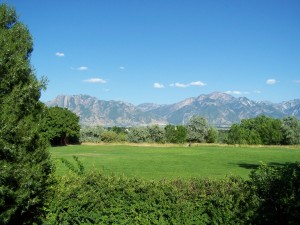
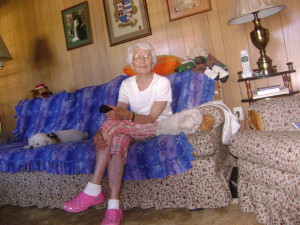
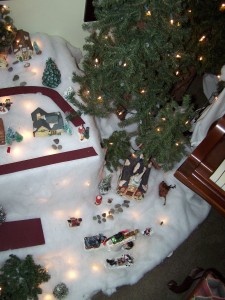
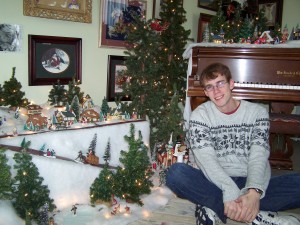
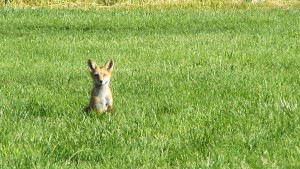
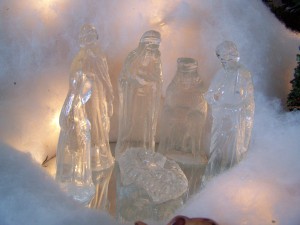
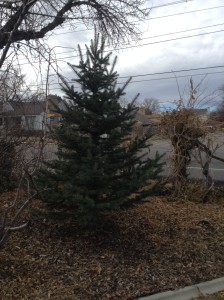
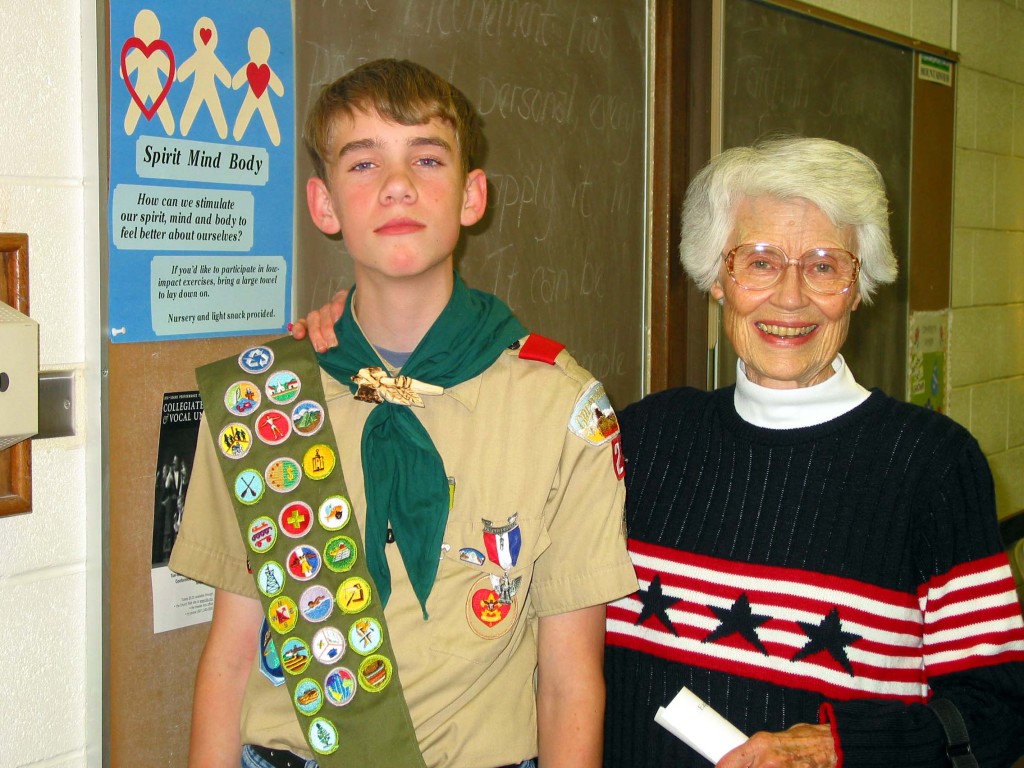
Well done, Fae. Well done.